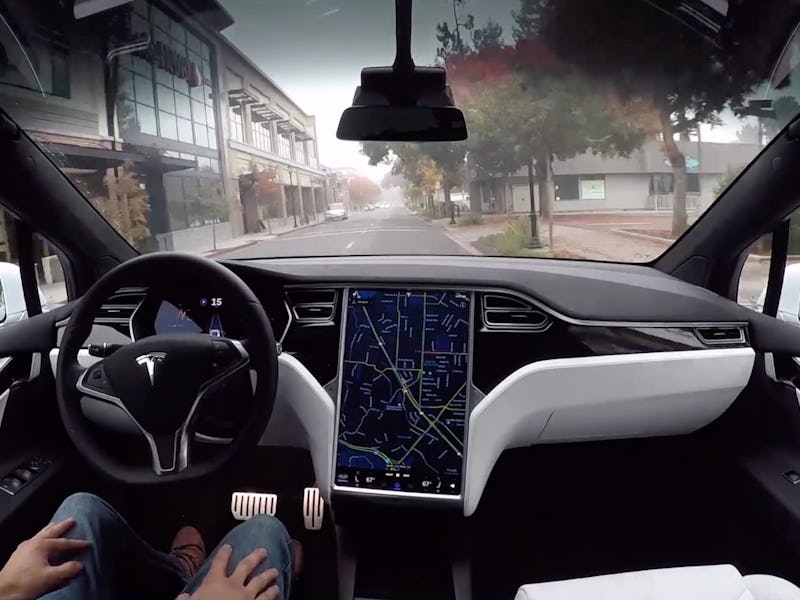Tesla is working on its own autonomous driving chip, but its relationship with Nvidia is not over yet, says, Alison Lowdnes, who works on artificial intelligence developer relations for Nvidia.
Lowdnes confirmed to Inverse that the chip maker is still working with the automaker, despite Tesla CEO Elon Musk’s announcement earlier this month.
“We’re still working with Tesla,” Lowndes told Inverse Friday during an interview at the Human-Level Artificial Intelligence conference organized by GoodAI in Prague, Czech Republic. Tesla declined to comment on the relationship to Inverse.
The confirmation follows comments from Nvidia CEO Jensen Huang in this month’s second-quarter earnings call, where he said that “if it doesn’t turn out, for whatever reason it doesn’t turn out for them [Tesla], you can give me a call and I’d be more than happy to help.” Musk, however, seemed to suggest this help won’t be needed:
Tesla announced in October 2016 that all cars manufactured from that date will ship with the necessary cameras and sensors to enable full, point-to-point autonomous driving. Cars started shipping with the Nvidia Drive PX 2 computer, powering a version of the semi-autonomous Autopilot software developed by Tesla. The suite, dubbed “Hardware 2,” replaced the previous system developed by Mobileye.
The Drive PX 2.
During the company’s latest earnings call, Musk announced the company had been in “semi-stealth mode basically for the last two to three years” developing a chip that can support full autonomy. Where the PX 2 processes 20 frames per second, Tesla can process 2,000 per second with full redundancy and fail-over. Users who have paid the $3,000 at the time of the car’s purchase for full autonomy, on top of the $5,000 Autopilot upgrade, will receive the chip as a free upgrade from the PX 2. The new system is dubbed “Hardware 3.”
The shift has so far proven smoother than the switch away from Mobileye. The company’s chief technology officer claimed in September 2016, two months after the companies announced their plans to part ways, that the automaker was “pushing the envelope in terms of safety.” Musk said in February 2017 that Tesla originally wanted to run both systems simultaneously as the automaker brought its in-house software up to a similar standard of the old system, but Mobileye refused and pushed Tesla to “cross the rubicon.”
Tesla’s new chip has a strong team backing it, with efforts led by Pete Bannon, the person that introduced the world’s first 64-bit smartphone processor in his time at Apple. Following years in stealth mode, the chip is set to reach consumers soon:
Whether such a strategy of in-house chip design is a good idea for the wider industry, though, is another question. Lowndes tells Inverse that “across the world now, there are 60 plus organizations that are vying for this custom chip scenario…most of those won’t make it, because the market will only support so many.”
Editor’s Note: The Human-Level Artificial Intelligence conference funded Inverse’s travel and accommodation to cover the event, but the organization has no input over Inverse’s editorial coverage.
